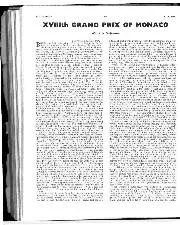And, of course, one year on at the Principality Moss again used a Lotus 18 to beat Ferrari to Monaco victory in a drive that firmly entered folklore, before then doing something similar at the Nürburgring Nordschleife.
Yet the 18 was a significant car in of itself too. It was Lotus’s first mid-engined competitor and was a marked improvement on its predecessors. And it helped Lotus get runner-up in the F1 constructors’ table in both 1960 and ‘61. Though, it has to be said, this also owed much to Moss.
The 18 had success outside of F1 too, particularly in Formula Junior and it is thought that some 125 FJunior Lotus 18s were turned out…
Lotus 25

Jim Clark tackling Spa in 1964
Getty Images
The monocoque – that is, using a car’s outer skin as its structure – is now standard in Formula 1. But F1 cars instead used to have a spaceframe, made up of a network of tubes.
The monocoque long existed elsewhere before anyone in F1 thought to use it, for one it had been standard in aviation for half a century. Lotus boss Colin Chapman, though, got the idea to use it when he was surprised how stiff the monocoque of the Lotus Elan sports car was for its weight when torsion testing it.
The Lotus 25, introduced in 1962, was the first monocoque F1 car. Somehow though, Chapman neglected to mention its benefits to Lotus customer teams, which he’d just sold spaceframe Lotus 24s to and assured them there was virtually no difference with the 25. John Cooper, upon looking into the 25’s cockpit, said: “I see what you mean, you just forgot to put the chassis in this one”.
The monocoque had several benefits. It was much stiffer as well as allowed the car to be lighter and much more compact. The last point was Chapman’s main motivator, as he wanted to achieve a smaller frontal area – he got it down by 17 per cent – and make up for F1’s 1.5-litre engine spec brought in the previous year which left cars somewhat breathless on the straights.
Lotus 72

Ronnie Peterson gets some airtime at the Nürburgring in 1973
Getty Images
One can only imagine what contemporaries must have made of the Lotus 72 when it was unveiled in 1970. And as is appropriate for such a giant forward stride, the car stood the test of time in every sense.
You can make the case that this is the first machine with what we would consider the look of the modern F1 car. Chapman and Maurice Philippe had the idea to move the water-cooling radiator from the front of the car to the sides, allowing a wedge-shaped nose to reduce drag and lift as well as improved airflow over the car to the rear wing. The 72 even had a very modern-day-looking airbox behind the driver’s head.
Jochen Rindt in ‘70 took a crushing, but posthumous, title. And the car was still winning multiple grands prix as late as 1974. In total it bagged three constructors’ titles, two drivers’ crowns and a full 20 world championship grand prix wins. It is reckoned to be F1’s most successful car, as well with its five-year spread of victories the most enduringly successful. Team Lotus still was using it at the conclusion of the 1975 season.
Lotus 79

Mario Andretti leads team-mate Ronnie Peterson at Zandvoort
Getty Images
When F1 first employed negative-incidence aerodynamics in earnest in the late 1960s it was almost entirely via airflow over the car. But not everyone saw it that way. Designers Peter Wright and Tony Rudd at BRM explored turning the entire car shape into a wing.








